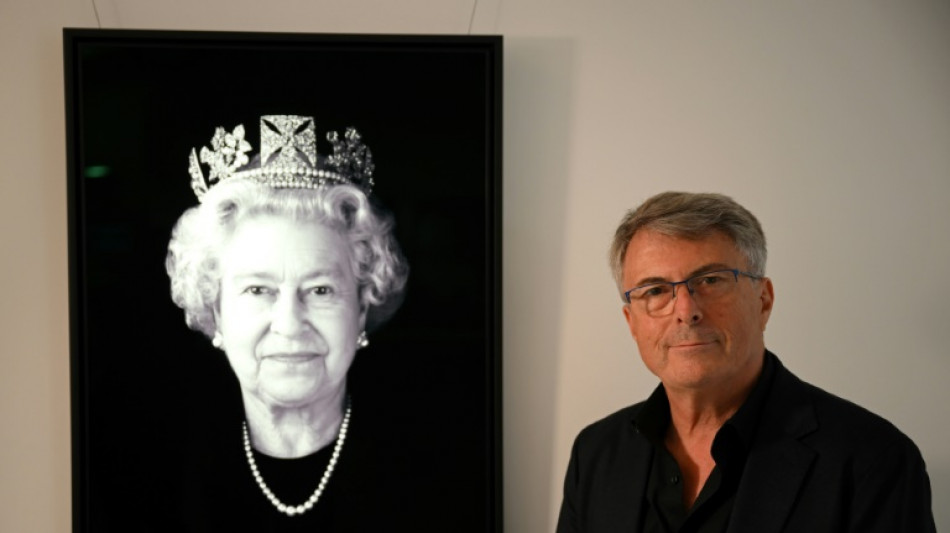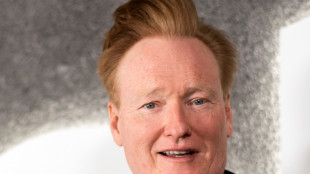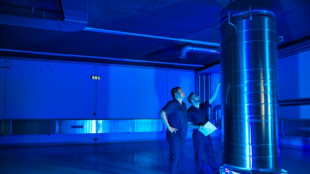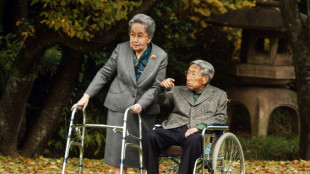
-
 Debt-saddled Laos struggles to tame rampant inflation
Debt-saddled Laos struggles to tame rampant inflation
-
India's vinyl revival finds its groove

-
 Climate finance can be hard sell, says aide to banks and PMs
Climate finance can be hard sell, says aide to banks and PMs
-
Egypt's middle class cuts costs as IMF-backed reforms take hold

-
 Dinosaur skeleton fetches 6 million euros in Paris sale
Dinosaur skeleton fetches 6 million euros in Paris sale
-
Trump's Republican allies tread lightly on Paris pact at COP29

-
 China's Xi urges APEC unity in face of 'protectionism'
China's Xi urges APEC unity in face of 'protectionism'
-
Farmers target PM Starmer in protest against new UK tax rules

-
 UN climate chief urges G20 to spur tense COP29 negotiations
UN climate chief urges G20 to spur tense COP29 negotiations
-
Philippines warns of 'potentially catastrophic' Super Typhoon Man-yi

-
 Tens of thousands flee as Super Typhoon Man-yi nears Philippines
Tens of thousands flee as Super Typhoon Man-yi nears Philippines
-
Gabon votes on new constitution hailed by junta as 'turning point'

-
 Tens of thousands flee as Typhoon Man-yi nears Philippines
Tens of thousands flee as Typhoon Man-yi nears Philippines
-
Is Argentina's Milei on brink of leaving Paris climate accord?

-
 Fitch upgrades Argentina debt rating amid economic pain
Fitch upgrades Argentina debt rating amid economic pain
-
Trump picks Doug Burgum as energy czar in new administration

-
 At summit under Trump shadow, Xi and Biden signal turbulence ahead
At summit under Trump shadow, Xi and Biden signal turbulence ahead
-
Xi warns against 'protectionism' at APEC summit under Trump cloud

-
 Xi, Biden at Asia-Pacific summit under Trump trade war cloud
Xi, Biden at Asia-Pacific summit under Trump trade war cloud
-
Leftist voices seek to be heard at Rio's G20 summit

-
 Boeing strike will hurt Ethiopian Airlines growth: CEO
Boeing strike will hurt Ethiopian Airlines growth: CEO
-
US retail sales lose steam in October after hurricanes

-
 Spate of child poisoning deaths sparks S.Africa xenophobia
Spate of child poisoning deaths sparks S.Africa xenophobia
-
Comedian Conan O'Brien to host Oscars

-
 Gore says 'absurd' to hold UN climate talks in petrostates
Gore says 'absurd' to hold UN climate talks in petrostates
-
Global stocks struggle after Fed signals slower rate cuts

-
 China tests building Moon base with lunar soil bricks
China tests building Moon base with lunar soil bricks
-
Oil execs work COP29 as NGOs slam lobbyist presence

-
 Gore says climate progress 'won't slow much' because of Trump
Gore says climate progress 'won't slow much' because of Trump
-
'Megaquake' warning hits Japan's growth

-
 Stiff business: Berlin startup will freeze your corpse for monthly fee
Stiff business: Berlin startup will freeze your corpse for monthly fee
-
Dominican Juan Luis Guerra triumphs at 25th annual Latin Grammys

-
 Tropical Storm Sara pounds Honduras with heavy rain
Tropical Storm Sara pounds Honduras with heavy rain
-
TikTok makes AI driven ad tool available globally

-
 Japan growth slows as new PM readies stimulus
Japan growth slows as new PM readies stimulus
-
China retail sales pick up speed, beat forecasts in October

-
 Pakistan's policies hazy as it fights smog
Pakistan's policies hazy as it fights smog
-
Mexico City youth grapple with growing housing crisis

-
 Cracks deepen in Canada's pro-immigration 'consensus'
Cracks deepen in Canada's pro-immigration 'consensus'
-
Japan's Princess Mikasa, great aunt to emperor, dies aged 101

-
 Venezuela opposition activist dies in custody
Venezuela opposition activist dies in custody
-
Policymakers defend Fed independence amid concerns about Trump era

-
 Lebanon economic losses top $5 billion in year of clashes: World Bank
Lebanon economic losses top $5 billion in year of clashes: World Bank
-
Fed Chair calls US the best-performing major economy in the world

-
 Brother of late Harrods owner also accused of sexual violence: BBC
Brother of late Harrods owner also accused of sexual violence: BBC
-
New York to revive driver congestion charge plan, drawing Trump ire

-
 China's Xi arrives in Peru for APEC summit, Biden meeting
China's Xi arrives in Peru for APEC summit, Biden meeting
-
Spain's Vanguardia daily to stop posting on 'disinformation network' X

-
 New York to revive driver congestion charge plan
New York to revive driver congestion charge plan
-
US stocks wobble as traders weigh future Fed cuts


Britain's Queen Elizabeth and the artists who captured her
Filmed, photographed and painted from all angles over many decades, Queen Elizabeth II sat for a string of renowned British artists whose works have been brought together in a new exhibition.
At the entrance to London's Quantus gallery, more used to showing the works of street artists like Banksy or Stony, a bronze bust of the queen who died on September 8 welcomes visitors.
It is one of the centrepieces of Majesty: A Tribute to the Queen which features works by three artists who portrayed Elizabeth at different stages of her life and through a range of mediums.
Frances Segelman did three sessions with the monarch in 2007.
"I didn't want to portray her like some artists do, they distort things, they want to make a sensation, and I didn't want to do that," she told AFP.
Her sculpture was testament to Elizabeth's "solid, strong rock" like presence in British life.
But meeting the queen in person, she said, threw up some surprises.
There was "this wonderful woman there, who I had looked at all my life and she's just sitting there, she's just lovely, talking about different things".
Segelman was relieved that her subject proved so friendly, but soon realised it was also preventing her from concentrating.
- 'Ma'm you don't have to speak to me' -
Worried about how to ask the queen to stop talking, she eventually plucked up the courage to tell her "Ma'am you don't have to speak to me, you can just relax if you like".
The queen, however "just carried on talking, it didn't make any difference", she recalled.
The exhibition also features artworks by Christian Furr, the youngest artist to be commissioned to paint an official portrait of the queen.
"I wanted to do something different, that captured her personality, her liveliness, her life, her humour, and also her humanity," Furr said.
Although there was an "ordinariness" to the queen, she was also "majestic", he said.
Only 28 when she sat for him in 1995, he said he felt out of tune with the nineties when so-called Britart -- known for its use of new materials and creative processes -- dominated the art scene.
"I was completely out of fashion. It was (all) Britart when I created that painting. It was completely anachronistic."
His portrait stands in contrast to the black and white works of Rob Munday, a holograms specialist, that create a 3D effect by combining several images of the same subject.
Entitled "Equanimity", his main work, produced with Chris Levine in 2004, has become one of the most iconic images of the queen.
It has been featured on stamps and banknotes and on the cover of Time magazine in 2012 to mark the queen's diamond jubilee.
From the front, looking straight at the lens, the queen appears dressed in black, wearing a crown and white fur teamed with a string of pearls.
Moving around her, the viewer can see different images of the monarch.
In the early 2000s "it was still very new technology" that required the model to be perfectly still, he said.
The queen however was "very accommodating".
The monarch was "very used" to sitting for artists and so was in many ways the "perfect sitter", he said.
He was still slightly nervous about her reaction to the final result but need not have worried.
"Of course I was a bit worried about what she is going to think about such a realistic portrait, but she was fine with that," he recalled.
A.Zimmermann--CPN
